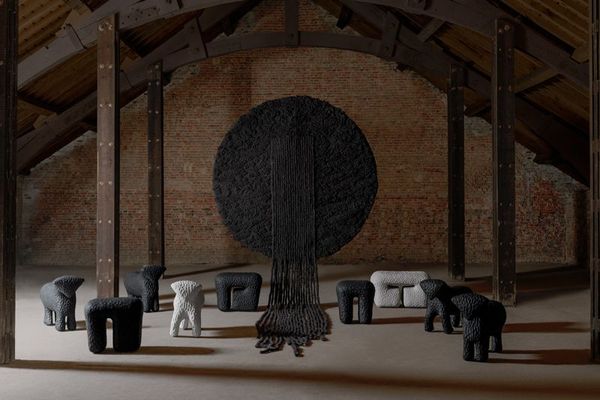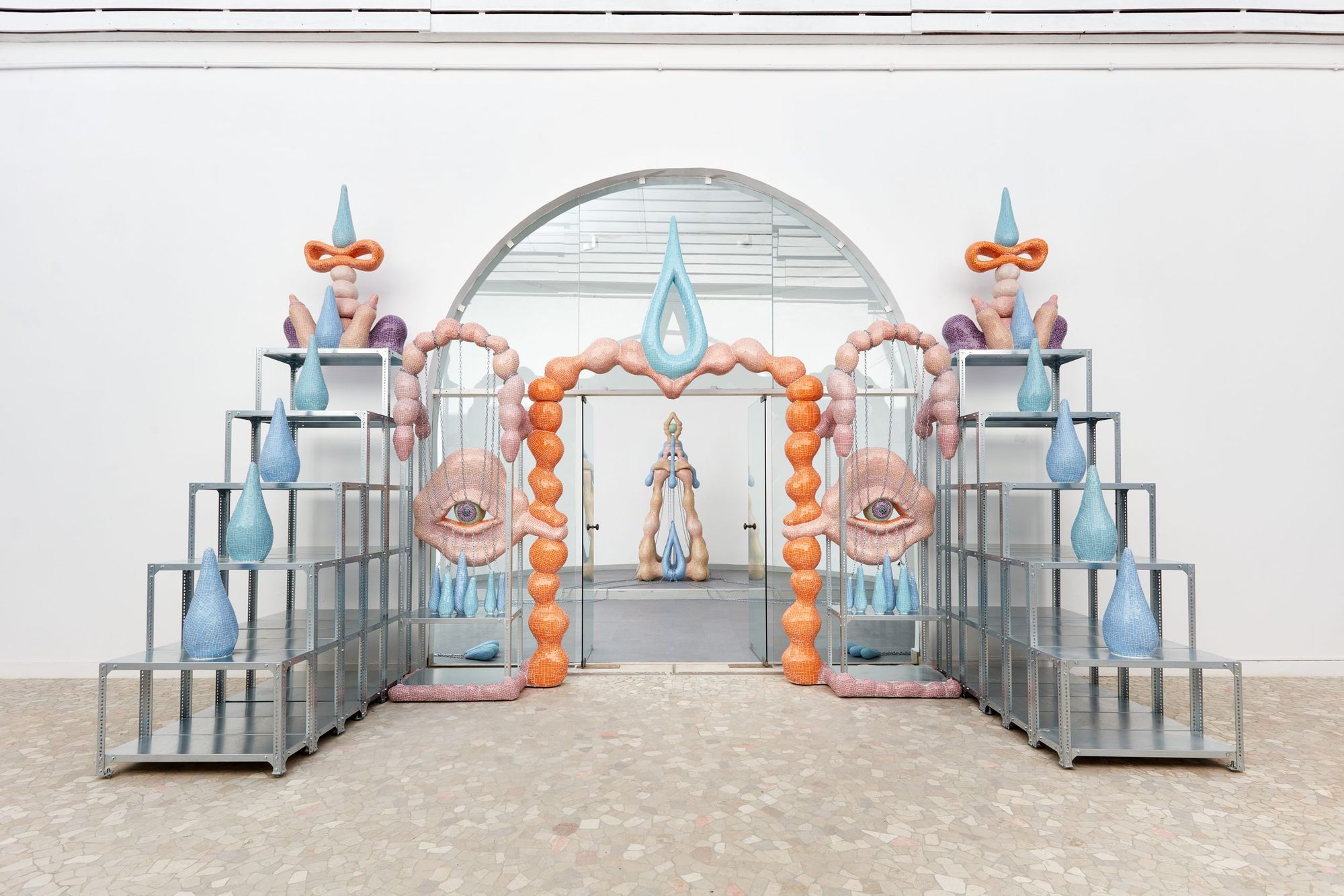The professional duo of artist Zsófia Keresztes and curator Mónika Zsikla is energetic, friendly and very competent. With their exhibition titled “After Dreams: I Dare to Defy the Damage”, they became the first female artist-curator duo to attend and show in the Hungarian pavilion of Venice Biennale*. The statues covered in tiny mosaic pieces are a sensitive reflection of the challenges posed by the pandemic: the figures going through the process of metamorphosis as totems of the 21th century tell the story of one’s search for identity and connection. No wonder that works so in tune with the Zeitgeist of our age piqued interest in the professional scene. We asked the duo about their work together and their feelings about the exhibition at the Biennale.
This article was published in print in Hype&Hyper 2022/2.
Portrait by Krisztián Zana
Other photos by Dávid Bíró
You’ve known each other for years before trying yourselves at the Biennale. Whose idea was it to apply?
Zsófia: Móni reached out to me. The first round of applications was already over without a winner. The deadline was extended so we joined the second round. It was in 2016, when Móni invited me to an art camp in Miskolc, that’s where our friendship started, and we hadn’t collaborated on anything before. I admired Móni’s professional work, and I felt that we resonated really well with each other so there was certainly a lot of potential in working together.
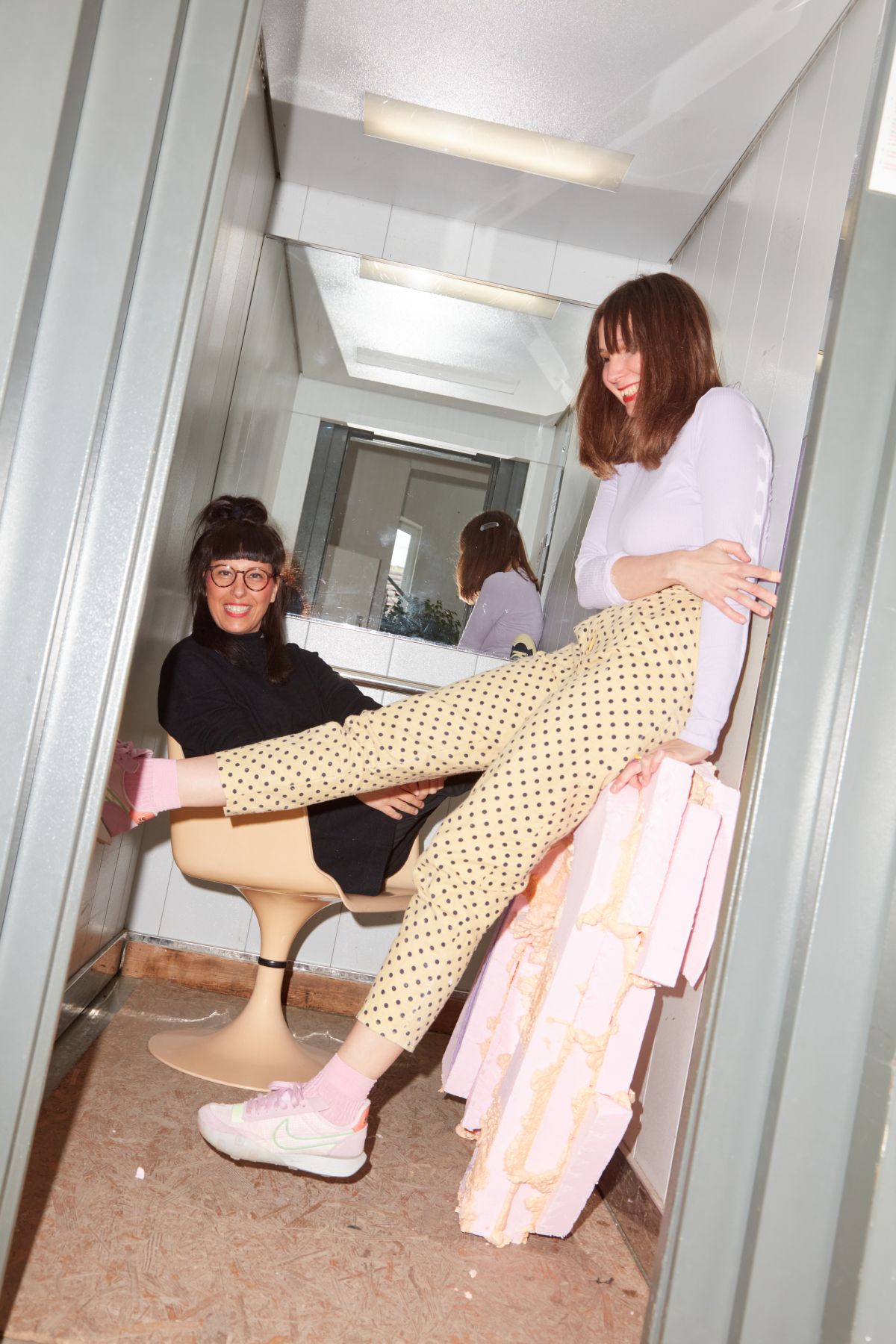
Mónika: I felt the same way about Zsófi! I didn’t even dare calling her about the application thinking she is too cool and working mostly with curators from abroad. We assembled our application in November 2020, during quarantine. Since we were alone, working in the online space, not even meeting with our closest friends, we didn’t tell anyone about what we were up to, only after we had already handed in the application. Until the last moment, we questioned whether we should apply at all or are we just putting ourselves up for failure. Our friends from the art scene—even though they appreciated our work—worried that chains and teardrops and search for identity were not really the themes Hungary would like to be associated with in Venice. What Zsófi does is risky, daring and a little crazy.
Zs: Looking back at the exhibitions of previous years, conceptual works were put more in the spotlight, the kind of visuality I use was not common at all. That’s why we saw little to no possibility that the jury would give us the opportunity to exhibit. We felt that our application was put together very well, so we developed a deep connection to it, and thought “even if we don’t win, we should realise our vision somewhere else”.
The exhibition is about a person’s search for their identity, networks taking over, and the boundaries between reality and the virtual world. From all the different associations and interpretations, what would you say makes your exhibition truly relevant in Venice in 2022?
Zs: I would say connecting with others and solidarity—the themes appearing in Arthur Schopenhauer’s hedgehog’s dilemma—and this is also what we based the concept of our exhibition on.
M: Zsófi is very interested in the relationship between analogue and digital which is also a very relevant topic today—a peculiar twist is that in 2020, we planned this fully analogue project in the virtual realm. There’s some absurdity to this fact, and this absurdity blended with being very relevant, and that slowly merged into the project. As I was roaming the national pavilions and central exhibition spaces after the opening event, I couldn’t help but feel that this is the Biennale of the pandemic, so to speak.
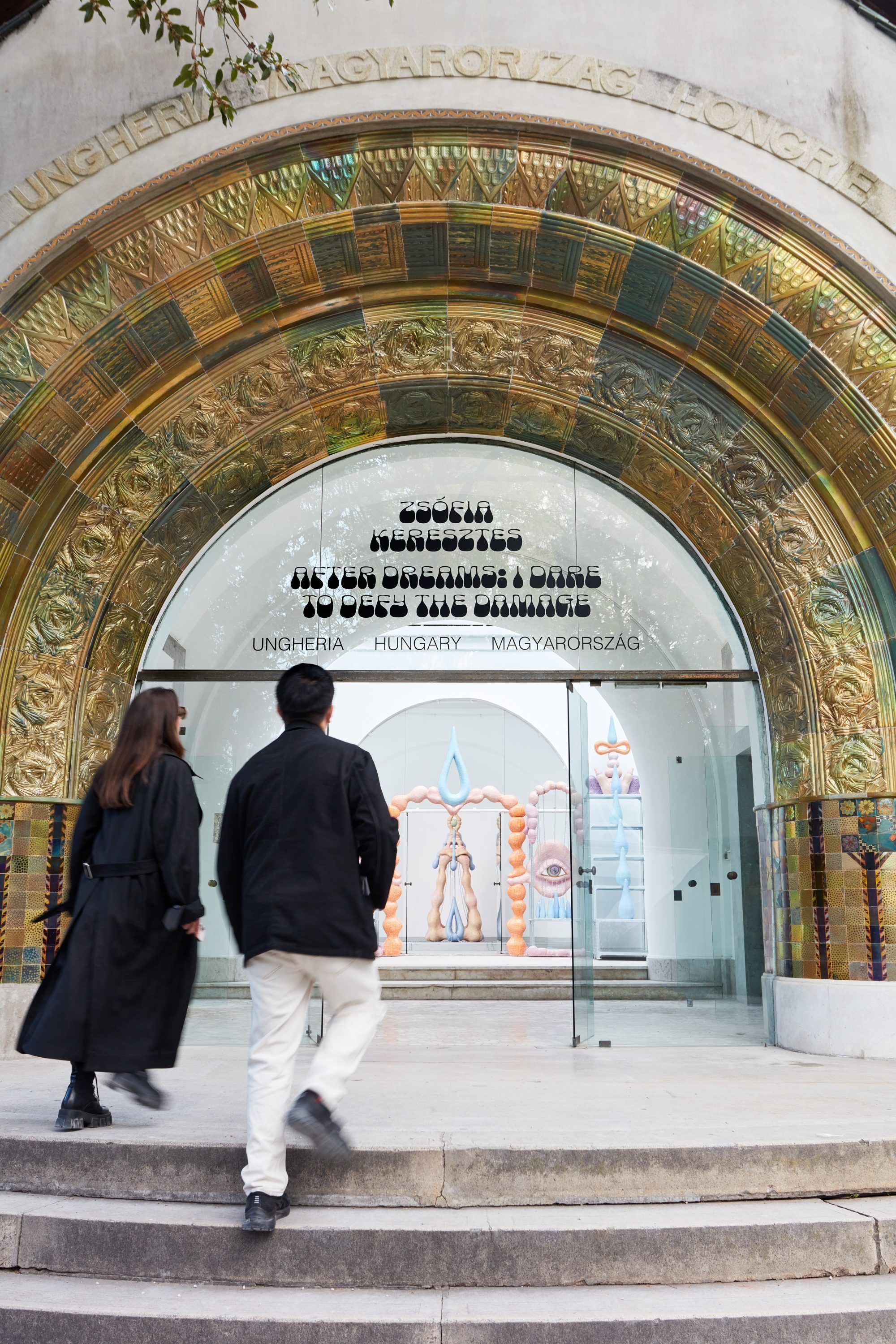
What kind of visual or thematic tendencies could the Hungarian pavilion connect with in this year’s program?
M: The result of the Hungarian open application was announced in December 2020, and we already had a clear image for the overall project and the 3D plans, as well as the eye motif that graphic designers took and highlighted from one of Zsófi’s works. While we were already in the process of making our plans a reality, several other countries—being afraid of delays due to the pandemic—didn’t even publish their call for applications for their national pavilions. We had already been working on our material when the Biennale’s title and theme was announced by the main curator, Cecilia Alemani.
Zs: …and I kind of broke down by the news, thinking that it’ll seem like we surfed the waves of the official theme as our project resonated so well with the concept of the central exhibition. Then everything got even worse when the official image was published with an eye as the central motif.
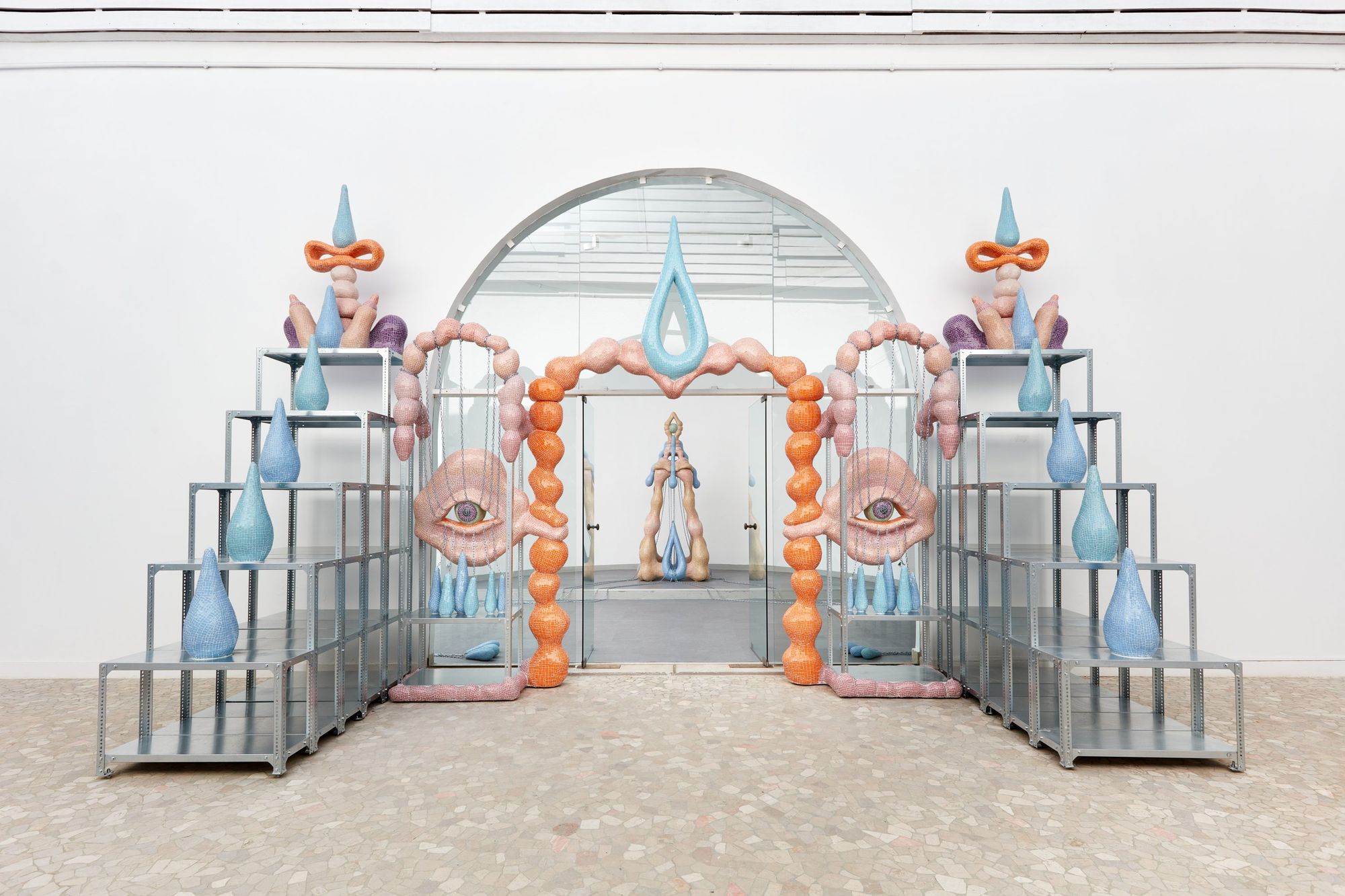
M: It was an unbelievable coincidence with the whole Biennale—we were wondering for a very long time whether our application inspired the main curator or we just echoed the current state of affairs in the world. Due to an unexpected constellation, the Hungarian pavilion extremely coherently connects to the central theme, and stands its ground in the program that highlights female artists, female techniques and explores anomalies concerning female identity mostly from a narrative perspective. This archaism and narrative, totem-like approach accentuated in Zsófi’s statues is also something that can be witnessed in other artists’ works. The metamorphosis in the statues is also a very important element, continuously evolving, the process of change is also a theme in many other exhibited pieces.
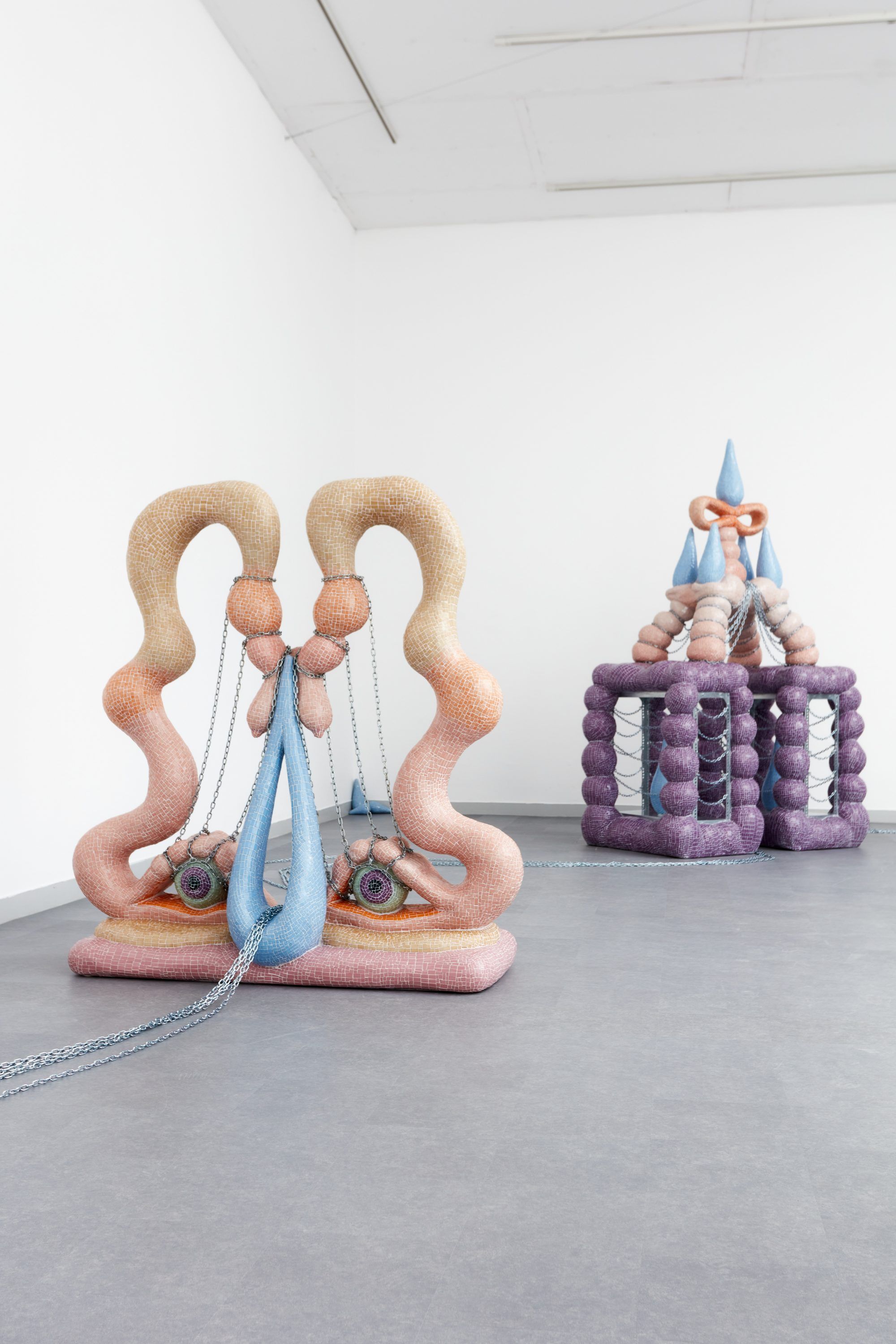
Zs: Works based on meditative processes and fragments are recurrent at the Biennale, and I felt that mortality, the fragility of the body is also present in several pieces—something that we can also very much connect to. Furthermore, a certain kind of cynicism, and a yearning to be part of completeness is also frequently emphasised, and this longing is also part of our concept.
How does your exhibition relate to the Hungarian pavilion and its history?
M: The space of the Hungarian pavilion is a very special structure, not a classic white cube space. The Art Nouveau-style building designed by Géza Maróti in the spirit of Gesamtkunstwerk was completed in 1909, and modernised following WWII to its current image. The space, however, stayed axially symmetric which is not easy to fill. We decided to think about the pavilion’s symmetry as a positive feature that went well with Zsófi’s approach to composition. We also visually connected to the building’s history—during the modernization, the old mosaic images were walled off, and a mosaic column featuring four figures and the replicas of the walled-off mosaic images was added to the back of the building. Zsófi’s metamorphic mosaic statues beautifully complement historicity with topicality.
Zs: We wanted the exhibition to be integrated into the space’s features. What is placed in one part of the space is mirrored in the room symmetric to it, however, not an exact replica, but a metamorphosed version. Two dimensions in which the bodies being formed look at themselves, but what they see is different from their actual images. Another important motif was the infinity symbol which turns the pavilion into a scene of endless fight.
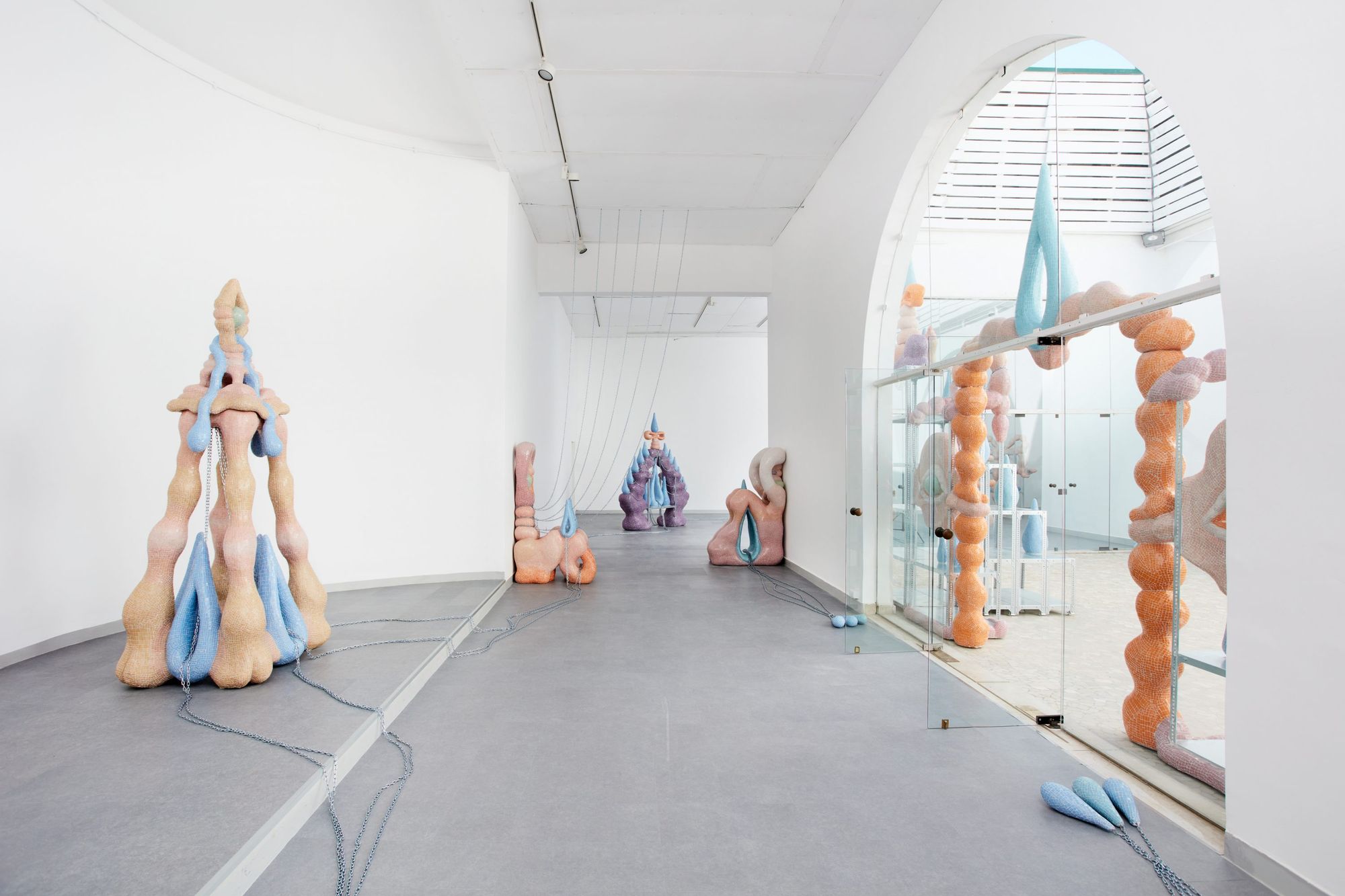
Collaboration with female artists has been an important aspect of your project. You’ve worked with key female figures of Hungarian design during your appearance at the Biennale: Studio DE_FORM designed the overall image of the exhibition, you wore jewellery designer Réka Lőrincz’s brooches at the opening event and you also collaborated with fashion designer Dóra Tomcsányi, and all of them continuously appeared on your Instagram as well. How conscious was this decision?
M: We are happy to hear that this was noticeable, as yes, it was a conscious decision. We strived to work with the best in the design scene. We do contemporary art, spending our waking moments with visual signs, so we were delighted to “invite” artists whom we admire to take part in our project. We contacted the team of DE_FORM during the preparation of our application, and we also asked Orsolya Horváth to create the visual designs at the beginning of the project. When we received support funding and were able to make tote bags for the occasion, we contacted Dóri Tomcsányi who immediately said yes. The Réka Lőrincz brooches have their own story…
Zs: …Móni had her birthday while we were in Venice and I got her the brooches she has been eyeing for a while as a present. It was a surprise though, she didn’t suspect anything.
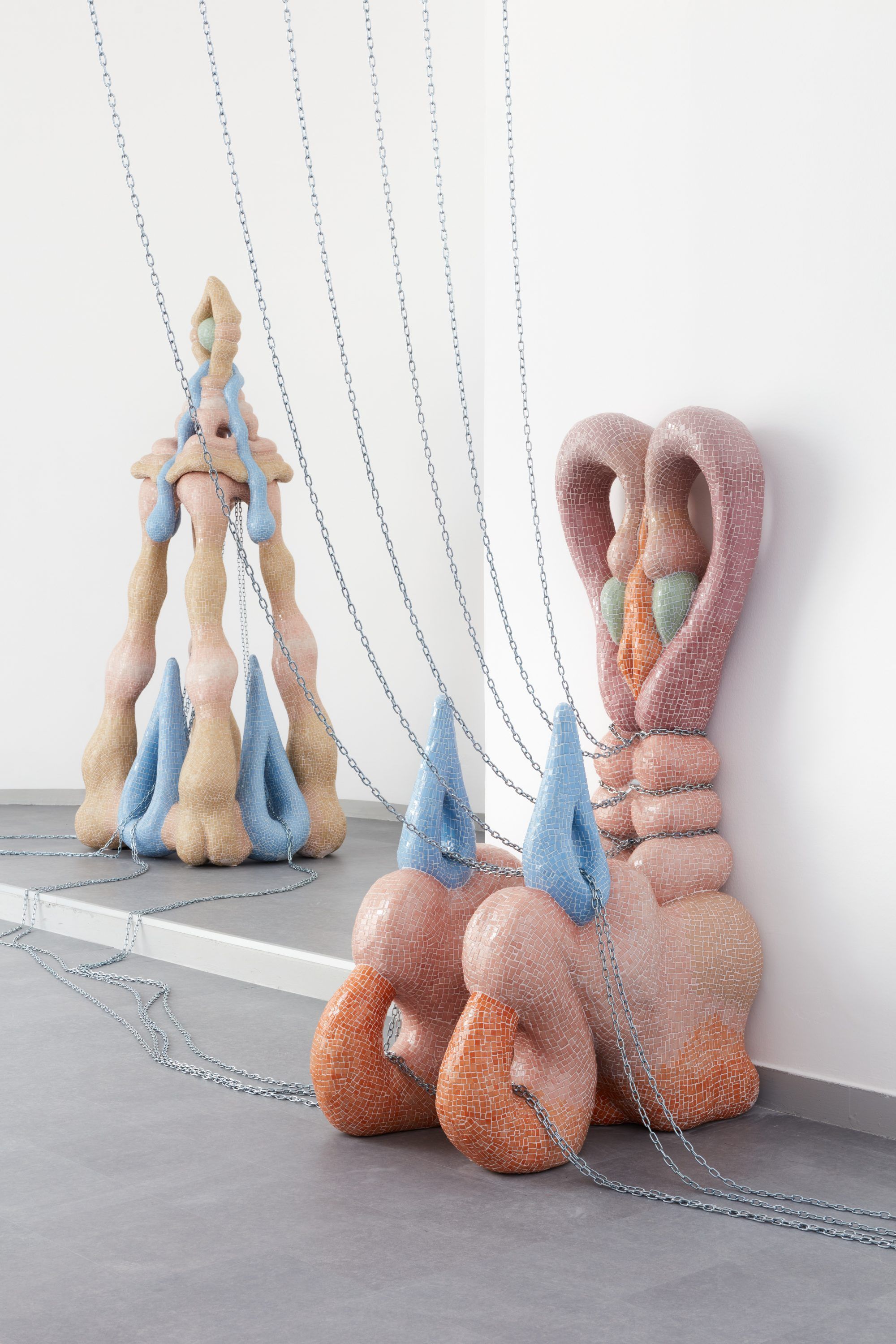
Artsy.net listed your exhibition among the 10 best pavilions. Other than general recognition, what has your participation at the Biennale added to your professional journeys?
Zs: Working together for one and a half years was a wonderful experience, as I have never spent this much time with the creation of an exhibition and I have never had such a long collaboration with any curator either. At times, it was hard for me to handle the responsibility for not just myself, but for another person as well—how messing something up or turning something down could potentially negatively affect another person. It’s a challenge for me to build trust in such situations, for example before, I could never imagine someone else physically altering my work. Now this happened, I had people who helped me make my vision a reality, and that felt mostly like a relief. Not only because I could work faster, but also it’s a great feeling to have a team that understands the gravity of the situation and helps me make the best out of it. This filled me with strength during critical times and it also felt amazing sharing our success.
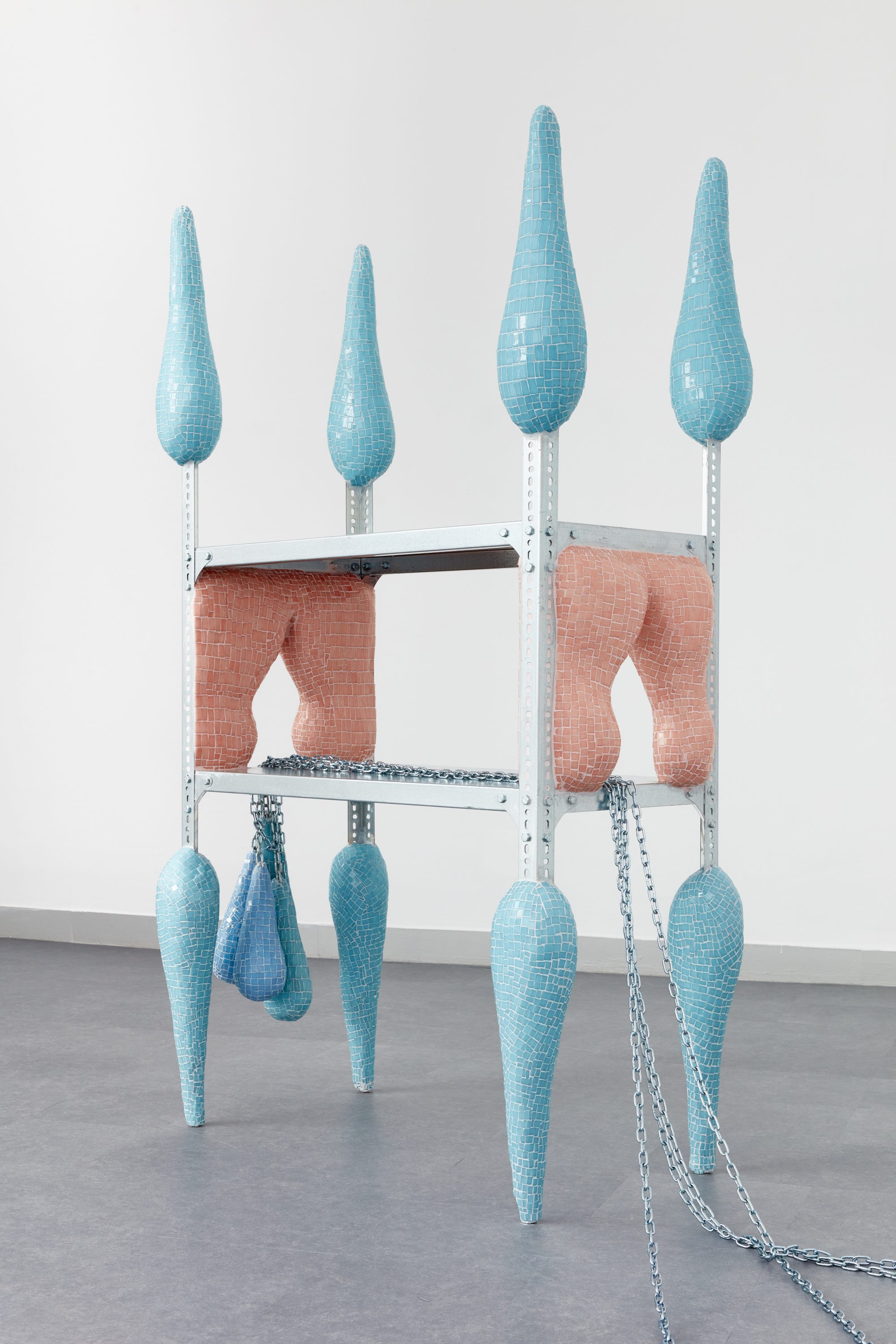
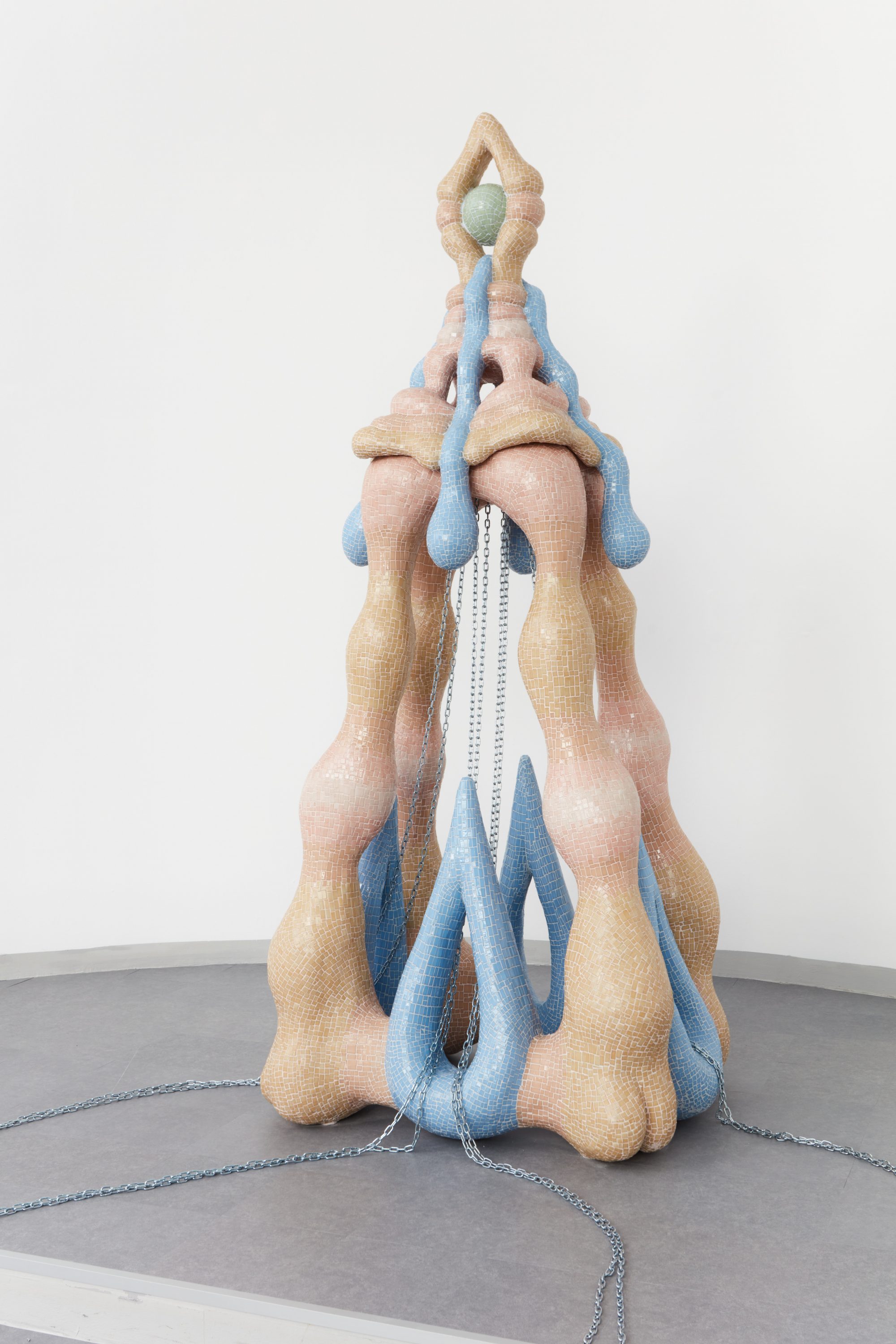
M: From the get-go, art collector duo Katalin Spengler and Zsolt Somlói backed us, and during our first brainstorming session Kati said that the dynamics of our relationship with Zsófi—to take an example from the film industry—will be like a primadonna and her director. I liked it so much that from that moment on I focused all my energy on giving everything to Zsófi as you’d do for a primadonna! We needed a lot of help to provide that “everything”. We are so grateful to so many people! Half of the impressum wall in the pavilion is filled with names that we want to thank for their contribution. I’d like to give Dóri Molnár and Judit Reszegi a special mention, as without their helping hands, we would’ve failed in many situations just like without the assistance of Andrea Dénes, Árpád Balázs and Péter Barta. These relationships gradually developed into friendships and it was a fantastic feeling to not only get financial support, but them genuinely being excited for us and our project as well. A similar friendship formed with Zsófi’s gallerist in Vienna, the founder of Gianni Manhattan, Laura and her husband James who is also an artist! I also gained a lot of confidence in project management by coordinating a myriad of different situations and relationships.
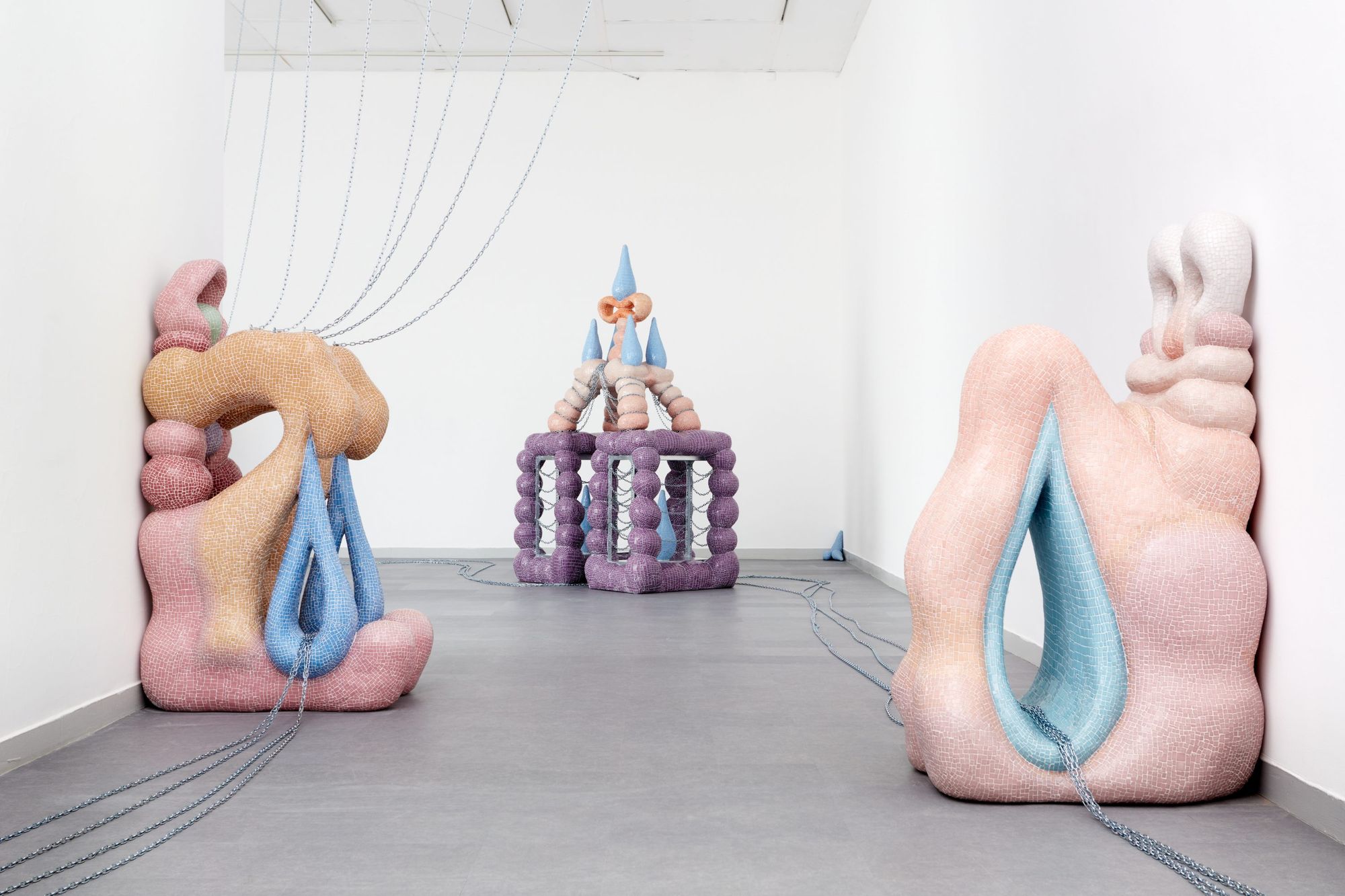
What kind of professional feedback did you get at the event?
Zs: Many people understood the background of our work without us having to explain it, and the visitors were able to come up with references to what they saw. This was a wonderful feeling as it meant that they were able to connect to the exhibition. We received positive feedback from international experts as well. A gallerist from Berlin enthusiastically pointed out that the statues are like a culmination of the elements of the central exhibition.
*The Hungarian pavilion welcomed female artists in Németh Hajnal’s project in 2011, in 1997 as part of Rózsa El-Hassan, Judit Herskó and Éva Köves’s exhibition (national commissioner: Katalin Néray), as well as Erzsébet Schaár’s posthumous exhibition in 1982.
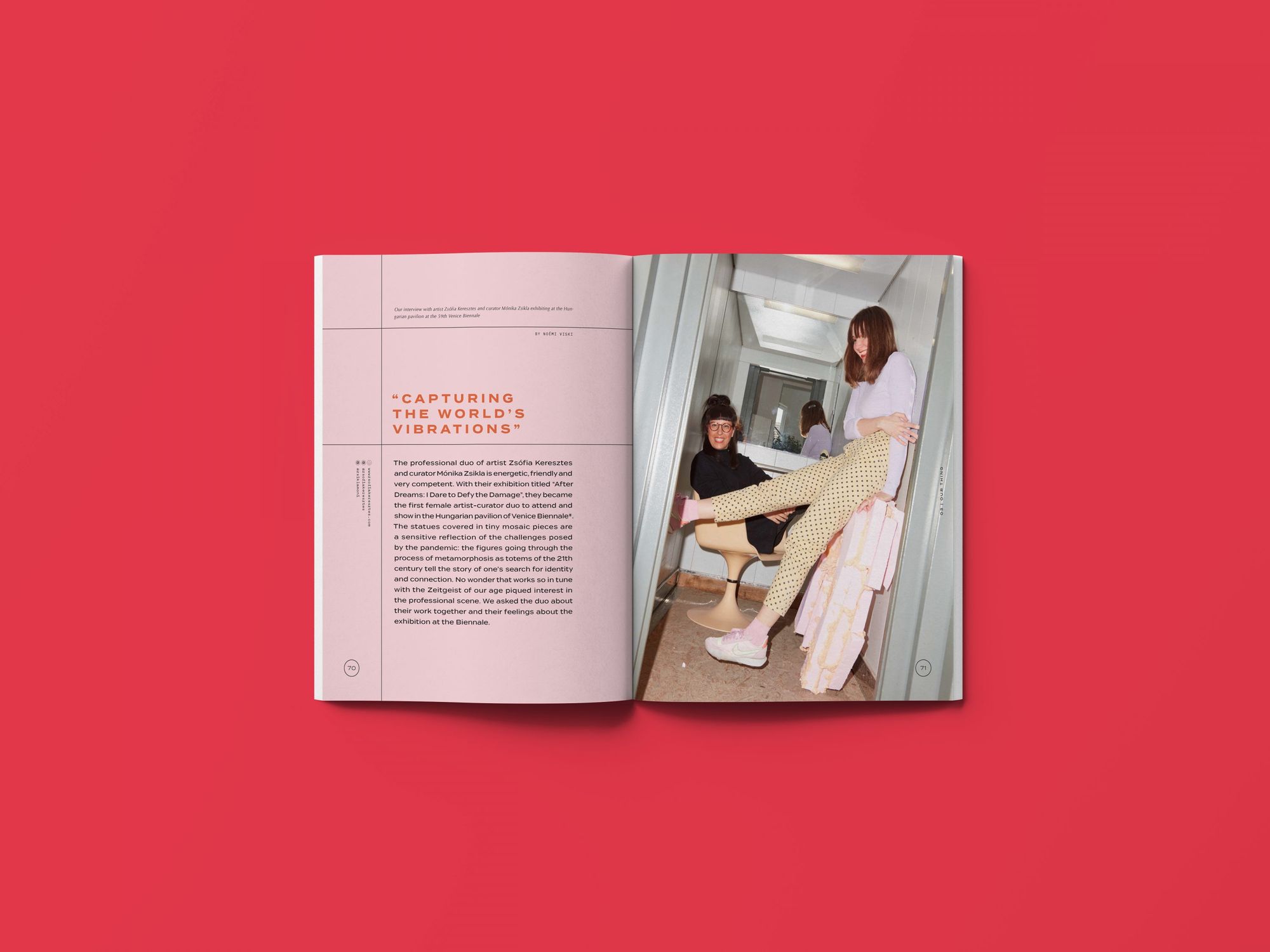
Prefer to read it in print? Order the fourth issue of Hype&Hyper magazine from our online Store!
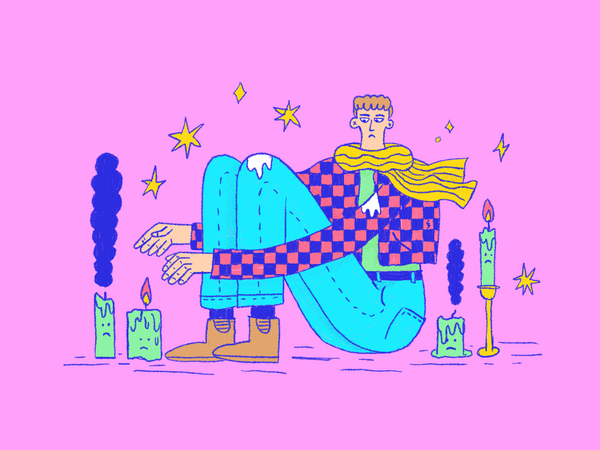
Smart use of the „gas weapon” favors the Russian side - interview on the energy emergency

The Russo-Ukrainian hamburger war
